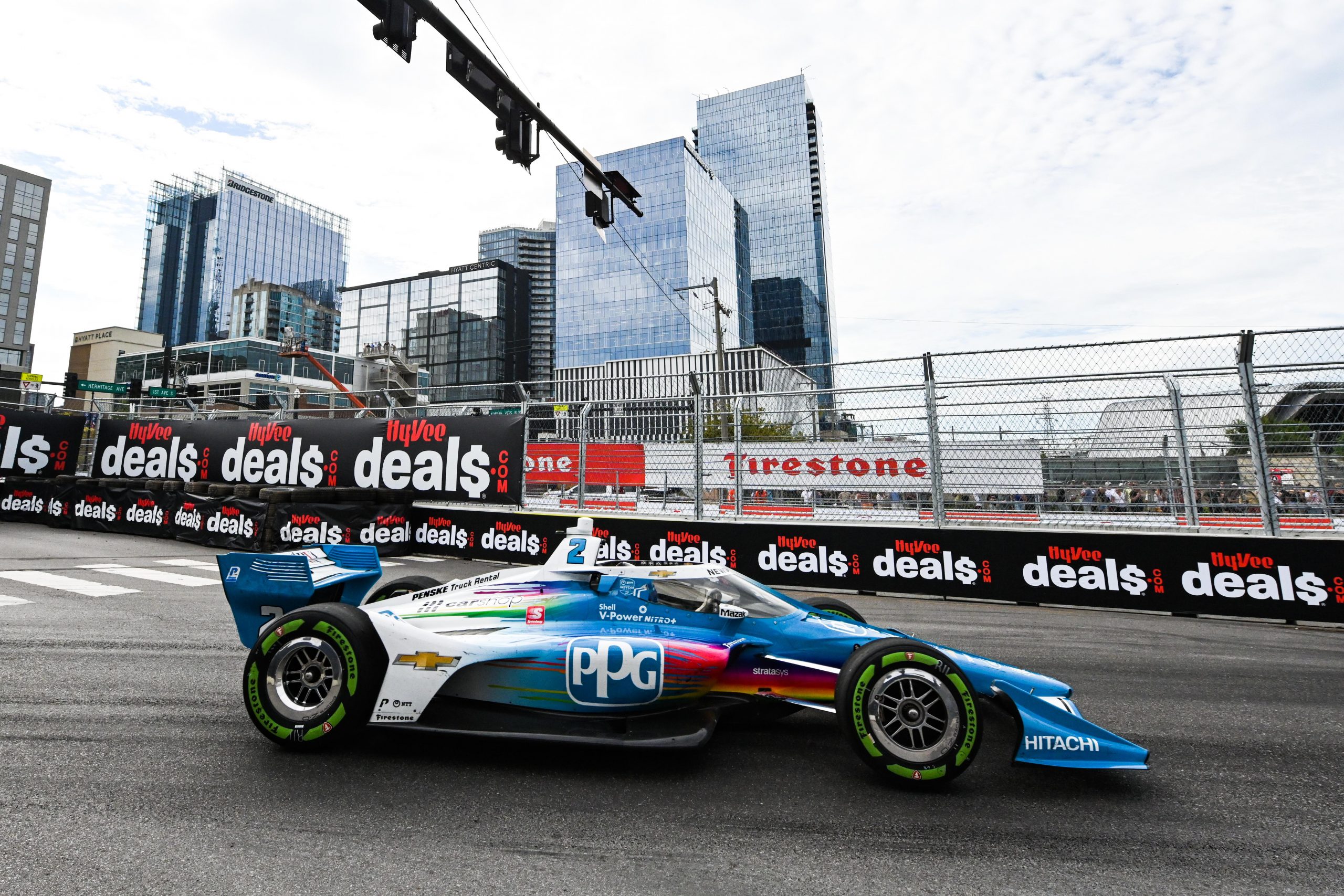If you watched this weekend’s Music City Grand Prix, you may have noticed a new hue on some tires – the bright green of Guayule tires.
No, IndyCar is not transitioning to 2018 Formula 1 levels of tire options. As a matter of fact, they are sticking with just two, that being their standard primary and alternate tires made by Firestone. The difference this weekend in Nashville is that the red that typically identifies the softer “alternate” tires in the IndyCar Series has been swapped out for an eye-catching green.
Enter Guayule (pronounced “why-you-lee”), a shrub native to the Southwestern United States. In an April announcement at the Indianapolis Motor Speedway, Mark Miles, CEO of IndyCar’s parent company Penske Entertainment, introduced the Guayule-made tires as part of a slew of long-term eco-friendly goals of the IndyCar Series, including increased use of electric vehicles during events and increased usage of renewable energy sources. Although the new tire build made its race debut on Sunday on the Streets of Nashville, they were first used in May at the annual Indianapolis 500 pit stop competition.
As Bridgestone Chief Technology Officer Nizar Trigui put it back in April, “the natural rubber it (the Guayule) produces is chemically identical to the rubber that comes from the Hevea trees in Southeast Asia (the endangered tree species that provides 90% of the world’s rubber)”. As Firestone and its parent company Bridgestone continue to develop natural rubber tires for commercial use, IndyCar and its partners continue to make eco-friendly steps, including the planned introduction of hybrid engines in the 2024 season.
What do fans and drivers think?
After the first practice session at the Music City Grand Prix on the streets of Nashville, Team Penske’s Josef Newgarden said that the guayule tires “felt fine” and that they “…felt like a normal red in a lot of ways…” red, in this case, referring to the alternate tires, which are colored red on a typical IndyCar race weekend. As for the rest of that practice session, Newgarden went on to explain how the track rubbered up just fine, implying that the difference between the Guayule tires and the typical reds was minimal if any at all.
Fans had their opinions on the Guayule tires as well. Longtime IndyCar fan Kyle Conley noted on Twitter that if IndyCar chooses to use the eco-friendly Guayule tires in the future, they should change the color back to red to avoid confusion for fans both attending the race in-person or watching from home. Steve Bonek, in a question submission to RACER’s Marshall Pruett, questioned how a tire company such as Firestone could simulate real-world racing conditions like the ones the tires faced on Sunday at the Music City Grand Prix.
Some drivers even saw better performance out of the green Guayules throughout the weekend. Arrow McLaren SP’s Felix Rosenqvist discussed the performance of the tires after Friday’s practice session in Nashville, making it clear that they experienced less degradation than the normal red tires do.
The Last Word – Guayule tires
After all is said and done, it didn’t appear that the new makeup of the alternate tires had too much of an effect on Sunday’s race in Nashville. However, if IndyCar chooses to continue in the eco-friendly direction they have been (which it should), it is likely that we will see natural rubber tires more and more in the future. If so, Firestone and IndyCar must work together to make sure that the potential new tires have the same integrity as before.
Read On: F1 2023 Driver Lineup – Which seats remain after Alonso’s announcement?






